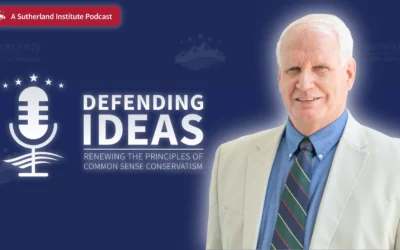
Written by Nic Dunn
January 31, 2024
Originally published in Utah Policy.
In our polarized political environment, it’s not often that an idea garners majority support across party affiliation, ideology, and demographic differences. New Sutherland Institute polling shows that the success sequence is just such a concept with broad resonance among likely voters in Utah. Policymakers should keep these findings top of mind in the 2024 legislative session and beyond.
The success sequence refers to research showing that, of young people who graduate from high school, work full-time, and marry before having children, 97% do not experience poverty in adulthood.
Sutherland recently published the results of a survey, conducted by Y2 Analytics, asking likely voters in Utah about their attitudes toward each pillar of the success sequence, and whether all three together represent a compelling framework for avoiding poverty.
The Sutherland/Y2 Analytics survey found that supermajorities of likely voters in Utah agree that graduating from high school (89%), getting a full-time job (86%), and getting married before having children (68%) are important steps “to secure a successful and happy life.”
Beyond viewing these steps as important in avoiding poverty in adulthood, the most striking finding in the survey is the broad support for teaching the success sequence to Utah’s public school students.
When asked how they felt about teaching middle and high schoolers about the economic outcomes of the success sequence, 73% of likely voters in Utah overall expressed support.
More compelling still is the support across key sub-demographics of Utah’s likely voters.
Eighty percent of Republicans, 60% of Democrats, and 67% of Independent/other likely voters support teaching the success sequence in schools.
Unmarried likely voters (60%), those without a college degree (73%), and those earning less than $50,000 a year (61%) also gave approval.
When categorized by race/ethnicity: 74% of those who are white, and 73% of Utah’s minority population (Hispanic, Asian, black, and all other racial groups) support the sequence being included in curriculum.
Such a consensus in Utah may not be surprising. After all, Gov. Spencer Cox has already made the importance of education, work, and properly timed family formation a focus of his administration.
“Young people who get at least a high school degree, get a job, marry and [then] have kids … are far less likely to experience poverty than those who don’t,” the governor said in his 2023 State of the State address.
As further evidence of this priority, Cox’s Utah Office of Families has expressed continued support for the success sequence. The office’s director, Aimee Winder Newton, joined Sutherland’s Defending Ideas podcast, which I host, where she noted the research showing the sequence’s anti-poverty impacts for people from diverse backgrounds.
In another episode, Sutherland Visiting Scholar Brad Wilcox shared national polling data that reflects similar sentiments toward the success sequence as we see in Utah, namely, broad support across racial and other demographic lines. This is a concept that resonates with people across the nation.
Empowering the next generation with these principles would be an important step toward reducing poverty and increasing upward mobility, and state policymakers can use the framework offered by the success sequence knowing it’s backed by solid research and broadly popular among Utahns.
The success sequence has already been shown as a reliable path out of poverty and is supported by strong majorities of Utah voters across ideological and demographic lines. Policymakers should embrace this bipartisan vision of upward mobility.
More Insights
Read More
Protecting property rights against government overreach
While governments can continue to regulate land use, these regulations and fees must be justified by a government interest and proportional to the effect of the development’s impact on that interest.
Do we need to care about the Utah State Board of Education?
For any Utah voters who also feel like K-12 public education is headed in the wrong direction, learning about the candidates running for a seat on the Utah State Board of Education (USBE) is a wise choice this election season.
Defending education choice the right way
Education choice has exploded in popularity across the nation in recent years. So why does it remain a contentious point of debate in some parts of the country?


